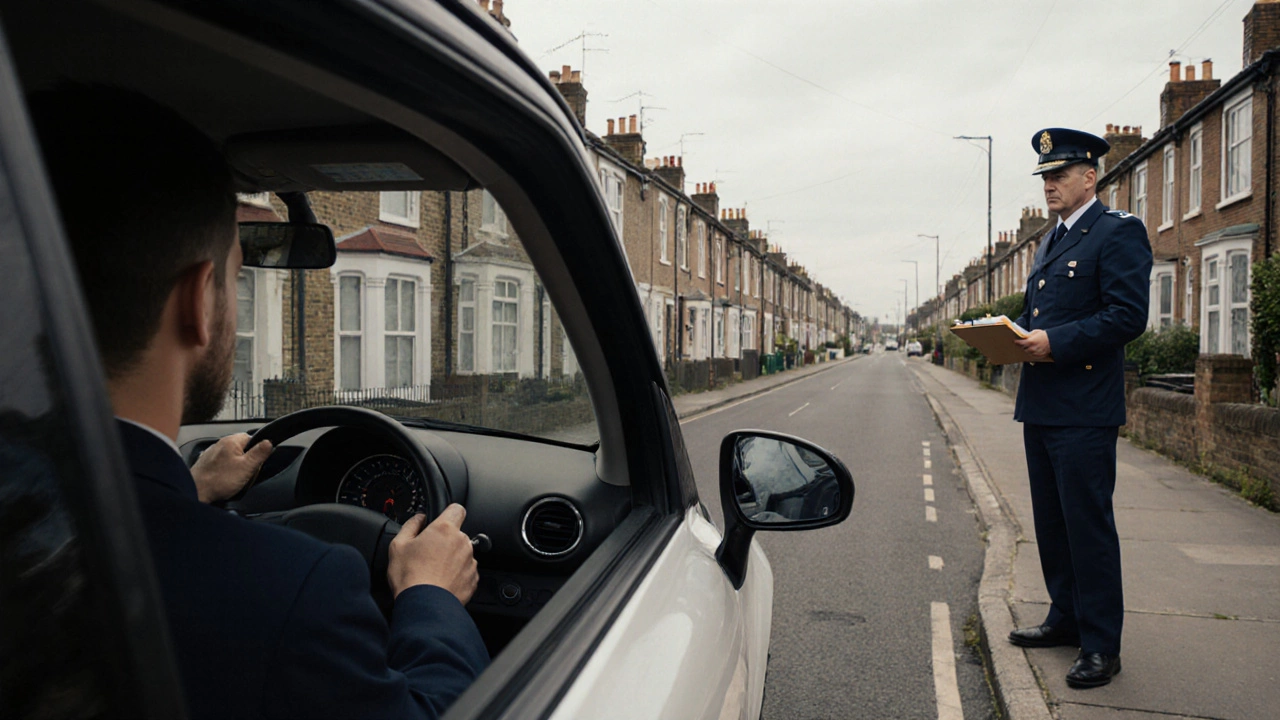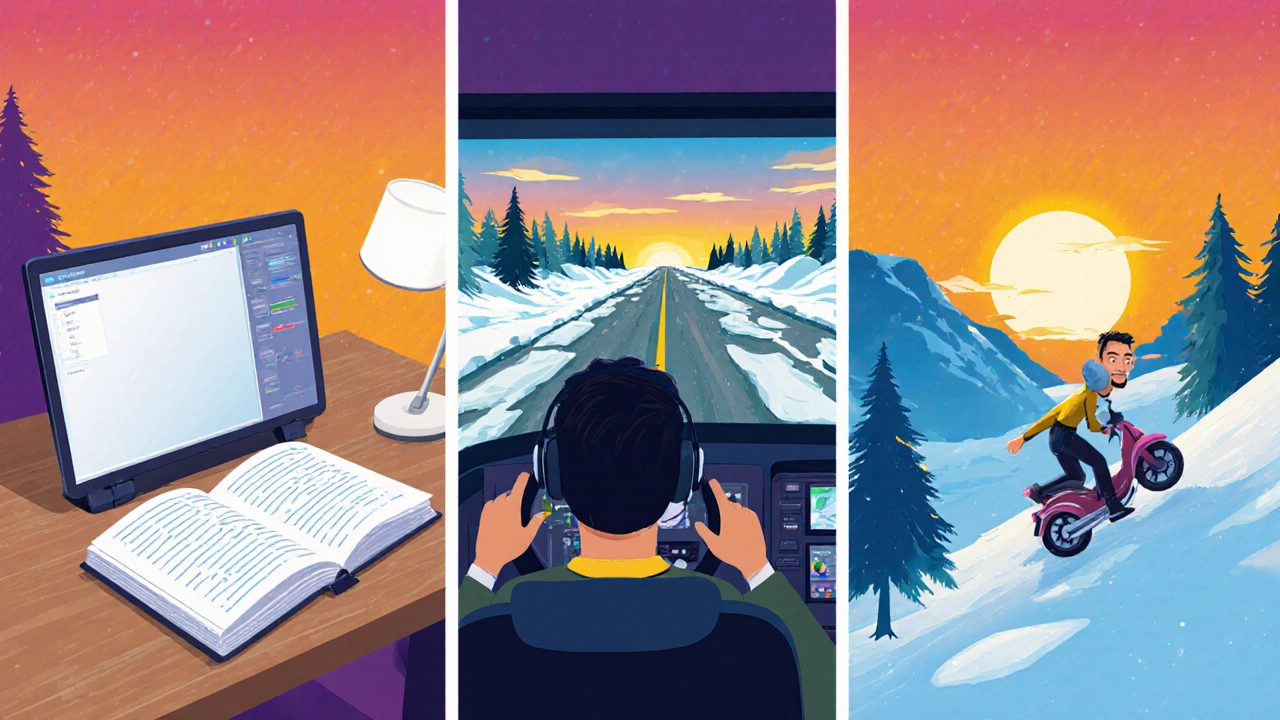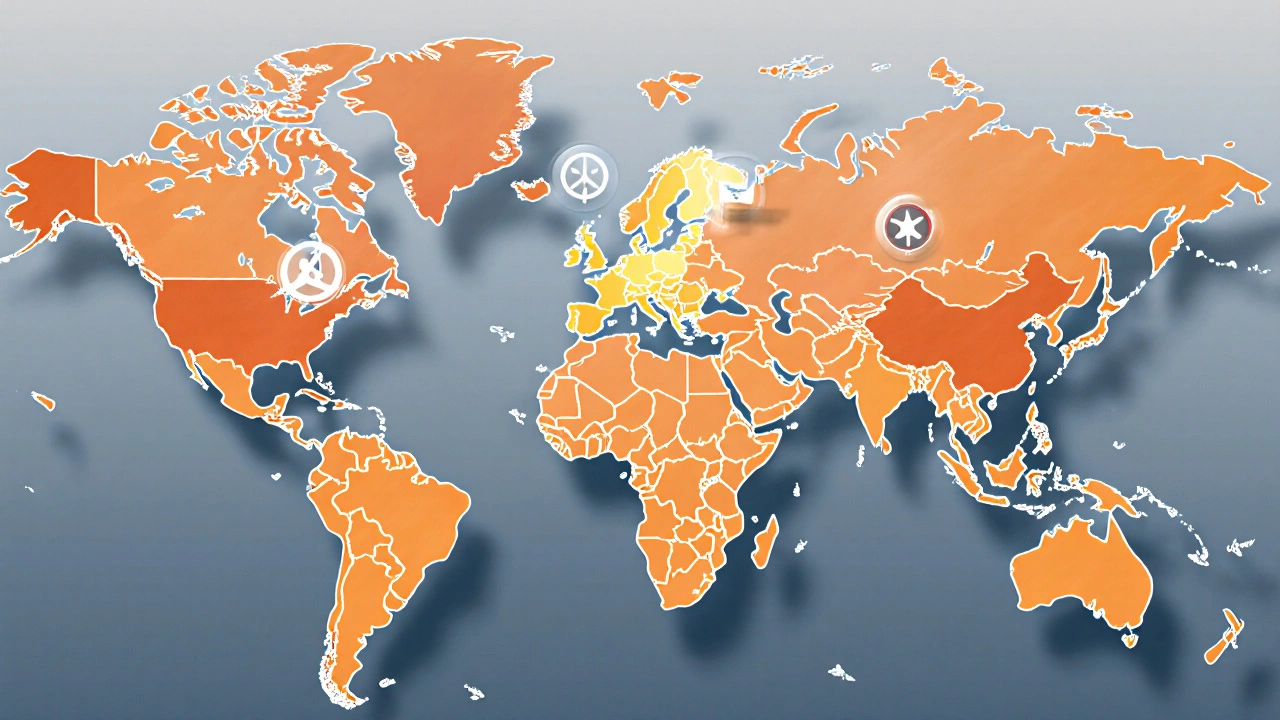Driving Test Difficulty Calculator
Pass Rate
First-time success rate on initial attempt
%
Main Challenge
Primary obstacle for candidates
Test Components
Thinking about where the hardest driving test lives? Whether you’re planning to move abroad, take a holiday road‑trip, or just curious about global standards, the answer isn’t as simple as naming a single country. Pass rates, road conditions, exam formats, and even the personality of the examiner all play a part. This guide breaks down the toughest spots, why they’re tough, and how you can boost your chances no matter where you sit behind the wheel.
What Makes a Driving Test "Hard"?
Before diving into the numbers, it helps to know what we’re measuring. A driving test can be deemed difficult based on three core metrics:
- Pass Rate - the percentage of candidates who succeed on their first attempt.
- Complexity of the practical manoeuvres required (e.g., hill starts, emergency stops, round‑about navigation).
- Stringency of the theory component and the way errors are weighted during the practical.
These factors vary widely across jurisdictions, influencing how candidates experience the test.
Global Pass Rate Snapshot
Below is a snapshot of first‑time pass rates from several well‑documented regions, based on the latest transport authority reports (2023‑2024). The data paints a clear picture of where candidates struggle the most.
| Country / Region | Pass Rate (%) | Main Challenge | Typical Test Length |
|---|---|---|---|
| Finland | 62 | Strict fault tolerance, heavy emphasis on hazard perception. | 45min |
| Japan | 55 | Complex manoeuvres, high theoretical score requirement. | 50min |
| United Kingdom | 49 | Unpredictable examiner standards, extensive manoeuvre set. | 40min |
| Australia (New South Wales) | 57 | Varied road types, mandatory hazard perception test. | 45min |
| United States (California) | 82 | Less strict fault counting, but heavy focus on parallel parking. | 30min |
| Singapore | 68 | High-speed lane changes, strict adherence to traffic signs. | 40min |
| Germany | 71 | Rigorous Autobahn entry/exit protocol, mandatory eco‑driving evaluation. | 45min |
Notice that the United Kingdom, Japan, and Finland sit at the bottom of the list - these are the places where candidates face the steepest hurdles.

Why Some Countries Are Tougher
Three big reasons drive these low pass rates:
- Examiner Discretion. In the United Kingdom, the examiner can fail a candidate for a single minor fault, leading to a highly variable outcome.
- Complex Manoeuvres. The Japan test includes tight three‑point turns, steep hill starts on both sides, and precise lane positioning that many learners find intimidating.
- Stringent Theory Standards. Nordic countries like Finland require a 90% score on a hazard‑perception video test before the practical can even be scheduled.
Other locales, such as California, place more emphasis on practical skill and fewer on theory, which usually pushes the pass rate higher.
The Top 5 Hardest Driving Test Regions
Based on the data and the factors above, here are the five places where passing on the first go feels like a real challenge.
-
United Kingdom (England, Wales, Scotland)
The UK’s practical test lasts 40 minutes and covers 20 distinct manoeuvres, from reverse parkings to emergency stops. Examiners use a “zero tolerance” approach: three minor faults and you fail. Add a mandatory 57‑question theory test (minimum 43 correct) and the odds stack against you.
-
Japan
Japan’s test combines a rigorous 100‑question theory exam (80% required) with a practical that demands flawless hill starts on both forward and reverse gears, plus a precise parallel parking on a 2‑meter space. Failure to execute any manoeuvre within the allotted time results in an automatic fail.
-
Finland
Finnish candidates first tackle a video‑based hazard perception test - you need at least 90 out of 100 points. The practical includes navigating narrow country roads, icy surface handling, and a mandatory eco‑driving assessment where exceeding fuel usage limits triggers a fault.
-
Germany (certain states)
German manuals require candidates to demonstrate correct Autobahn entry and exit, high‑speed lane changes, and a “green‑light” eco‑driving check that monitors emissions. Any breach of speed limits during the test leads to a hard fail.
-
Singapore
In Singapore, the test mixes heavy urban traffic with high‑speed expressway sections. Examiners focus heavily on proper use of turn signals and lane discipline. A single missed signal in a congested area typically ends the test early.

How to Prepare for a Tough Test
Whether you’re heading to the UK, Japan, or any other demanding jurisdiction, the preparation roadmap stays similar:
- Master the Theory First. Use official study guides and take timed mock exams. Aim for a buffer of at least +5% above the passing threshold.
- Practice Core Manoeuvres Repeatedly. Schedule at least 20 hours of supervised practice focusing on the exact manoeuvres listed by the local licensing authority.
- Simulate Real‑World Conditions. If you’re testing in a region with harsh weather (e.g., Finland’s ice), practice in those conditions or use a driving simulator that mimics them.
- Get Professional Feedback. An experienced instructor can spot subtle habits that examiners penalise, such as slipping the clutch too early on hill starts.
- Plan the Test Day. Arrive early, bring all required documents, and do a quick mental run‑through of the route. Calm nerves by breathing exercises - stress often leads to the tiny faults that tip the scale.
Investing in a focused, region‑specific intensive course can shave off weeks of trial‑and‑error, especially in places with low pass rates.
What If You Fail? Next Steps
Failure isn’t the end of the road. Here’s a quick recovery plan:
- Review the Examiner’s Report. Identify the exact faults - was it a missed turn signal or an unsafe lane change?
- Target Weak Areas. Schedule a few extra lessons that zero in on those errors.
- Retake the Theory (if needed). In many countries, a theory retake is required after a practical failure. Use the waiting period to solidify knowledge.
- Re‑book Smartly. Some jurisdictions allow you to book a retake within 14 days; others enforce a longer gap. Plan around your schedule to keep momentum.
- Stay Positive. Statistics show that many drivers who fail on the first attempt eventually pass on the second or third try, especially after focused practice.
Remember, the goal is safe, confident driving - not just a piece of paper.
Frequently Asked Questions
Which country has the lowest first‑time pass rate?
Based on 2024 data, the United Kingdom (England, Wales, Scotland) records the lowest first‑time pass rate at roughly 49%.
Do all countries require a theory test before the practical?
Most developed licensing systems, including the UK, Japan, Finland, Germany, and Singapore, require a written or computer‑based theory exam before you can book the practical. Some U.S. states allow you to take both on the same day.
Why is examiner discretion higher in the UK?
UK examiners follow a strict fault‑point system where even a single minor fault can count toward a fail. The lack of a standardized “error tolerance” means outcomes can vary between examiners.
Can I take a driving test in another country as a tourist?
Generally, you need to be a resident or have a provisional licence from that country. Some places, like Australia’s New South Wales, allow short‑term residency applicants to sit for the test after completing an approved driver‑education course.
What’s the best way to improve my hazard perception score?
Practice with official video clips and simulate the timing of responses. Aim to react within 1‑2 seconds of the hazard appearing - this is the benchmark used in Finland and the UK.

